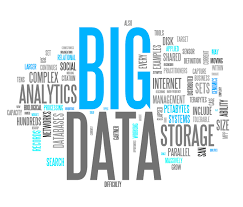Big Data and Predictive Analysis Jun 26, 2019

Any voluminous amount of unstructured, semi-structured and structured data that may be used to derive information can be described as big data, which is normally characterized by the 3Vs—volume, variety, and velocity of data.
While it has no specific volume of data to define it, terms like terabytes, petabytes, and Exabyte’s are often used to describe big data. This highlights the challenges of the data being too unstructured, too vast and too fast moving beyond the scope of traditional data management methods.
Predictive analytics, on the other hand, refers to the application of historical data forecasting future trends like consumer behavior. Predictive analytics uses statistical models and machine-learning algorithms to decipher historical data as well as identify patterns in the data.
A common misconception of predictive analytics is that it tells what will happen in the future when in truth, it only forecasts future trends using an acceptable reliability level, risk assessment, and what-if scenarios.
Big data and predictive analytics for companies are useful tools for finding solutions to questions such as, ‘What do customers want?’ The world’s most successful companies are using these tools to drive their sales and maintain their competitive edge.
The most extensive use of big data and predictive analytics for companies is probably to understand consumers’ preferences based on their psychographic and demographic profiles and predict their behavior. Through recording purchase behavior, companies can increase customer engagement through advertisements and delivery of highly personalized and targeted content.
Netflix, for instance, uses predictive analytics to provide relevant content to consumers; using movie ratings, surveys, and views, it can predict the content that their customers want and make recommendations for movies and shows.
The use of predictive analytics is on the rise in many companies in Australia. They use it to understand and predict consumer behavior.
Experian is recognized as one of the TOP three global credit reporting agencies and works with millions of businesses and individuals globally. It has successfully reported revenue of US $4.6 billion for 2016. Having so much information from customer and companies at its disposal prompted them to start using big data in solving business problems.
Quantum is Australia’s largest analytics business, offering business strategy tools, customer and market insight data assets, media segmentation engines and more to companies around the country. Unlike many other similar firms, it is actuarial-focused; they deal with issues that are complex and hard to understand. It has done so well in Australia’s analytics industry that Woolworths bought a 50% stake for $20 million, hoping to improve their customer targeting and advertising capabilities.
Is Bigger Data Better?
Using much data does not always yield better results. Arguably, predictive analytics may not need all the data to provide a forecast; the focus should be on understanding the amount of data which is enough to provide some results instead of analyzing all of it. When one has had enough data, adding more data does not make any much difference.
For instance, having analyzed the consumer purchase behavior of 100,000 customers, using 120,000 customers would change the mean, but not enough to make any statistical difference. As such, while much data is better than little data, there is an optimum level at which more data ceases to be meaningful!
Do you want to start using your data better? How can Big Data and Predictive Analysis help your business? SBA Business can put together the right team for you to start competing with companies who already use their data well.
References
https://www.datamine.com/datafix/index.php/2018/01/12/top-5-analytics-companies-in-melbourne-2018.
https://www.forbes.com/sites/jonmarkman/2017/06/05/amazon-using-ai-big-data-to-accelerate-profits/#34bb026d6d55
https://www.forbes.com/sites/louiscolumbus/2017/12/24/53-of-companies-are-adopting-big-data-analytics/#6f45bb6539a1
